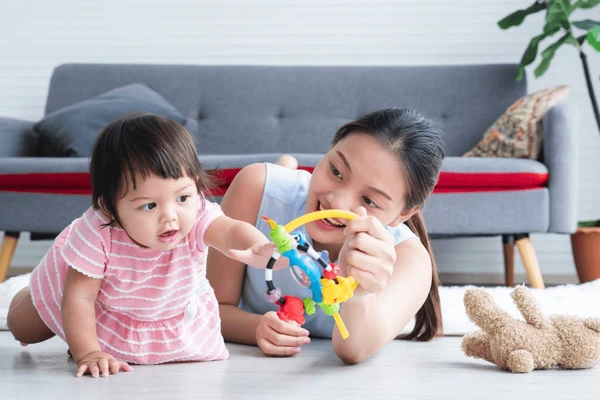Let me paint a familiar picture: You’re standing in the checkout line, juggling groceries, and your child suddenly starts melting down.
Eyes watching. Heat rising. You feel your shoulders tense, your stomach clench. You try to say something calm—“It’s okay, sweetheart.”

But your voice is tight. Your body is screaming something different.
If that’s ever happened to you, you’re not alone. And this is exactly where somatic parenting comes in.
Somatic parenting isn’t about memorizing perfect scripts or finding hacks to stop tantrums fast. It’s about learning to parent from your body. Because your child is already reading you—not just your words, but your posture, your tone, your energy. And chances are, you’re already parenting from your nervous system… whether you realize it or not.
What is Somatic Parenting, Really?
In simple terms, somatic parenting is about bringing awareness to how your body reacts and responds as you raise your child. It’s based on the understanding that emotions live in the body—and so do stress, trauma, and connection.
It draws from:
- Somatic Experiencing (Peter Levine)
- Attachment theory
- Polyvagal theory (Stephen Porges)
- And trauma-informed parenting practices
Instead of saying, “Calm down,” you model calm. Instead of punishing disconnection, you create repair. Instead of reacting from your own stress, you pause—and tune in.
Why It Matters (Especially If You’re Still Healing)
Let’s be real: most of us are parenting while unlearning our own childhood conditioning. Maybe you were told to “stop crying” or “be strong.”

Maybe no one ever mirrored your feelings back to you with compassion. Somatic parenting helps break that cycle by making your body—and your child’s—a safe place to feel again.
Here’s what it can help you do:
- Break generational patterns rooted in stress and shame
- Strengthen connection with your child through co-regulation
- Build emotional literacy in both you and your kid
- Reduce parental burnout by helping you stay grounded
A friend once told me, “I was trying so hard to teach emotional regulation. But it wasn’t until I unclenched my fists that my son stopped clenching his.”
It’s not about doing more. It’s about doing less, from a regulated place.
A Moment That Changed Everything for Me
I once saw a dad at the park, sitting on a bench while his toddler screamed on the grass, kicking and sobbing over a broken snack cup. You could feel the tension in the air—other parents glanced over, half-expecting him to lose it.
But he didn’t.
Instead, he slid off the bench, sat cross-legged a few feet away, and closed his eyes. One slow inhale. One long exhale. He gently tapped his fingers on his knees, grounding himself.
Within seconds, the toddler noticed. The screaming paused, just for a beat. Then he crawled over, sat in his dad’s lap, and—without being asked—started copying the tapping.
No scolding. No bargaining. Just nervous systems syncing, breath by breath.
That’s somatic parenting. It doesn’t always look like parenting. But it feels like safety.
How You Can Start Using Somatic Parenting Today
You don’t need a certification or hours of therapy to begin. Here are practical, body-based tools you can use right now:
1. Ground Yourself First
When chaos erupts, start with your own body:
- Feel your feet firmly on the floor
- Loosen your jaw and shoulders
- Place a hand on your heart or belly and breathe slowly
You’re not just calming yourself. You’re inviting your child’s nervous system to settle too.
2. Use the Color Zones
Borrowing from the Zones of Regulation, teach your kids to name their emotional state with colors:
- 🟢 Green: “I feel good and focused.”
- 🔵 Blue: “I feel sad or tired.”
- 🟡 Yellow: “I’m kind of hyped or jittery.”
- 🔴 Red: “I’m mad or overwhelmed.”
Ask, “What color are you in right now?” And share yours too. It turns emotional chaos into a shared language.
3. Co-Regulate Before You Correct
Before you try to fix a tantrum, meet your child where they are.
- Match their breathing for a few seconds
- Gently sway or hum together
- Offer a hug—if they’re open to it
Remember: kids borrow our nervous systems until they learn to regulate their own. Be the anchor, not the storm.
4. Slow the Pace
Our bodies are wired to mirror each other. When we move fast and talk fast, kids absorb that urgency.
So slow down.
- Walk a little slower through the house
- Do a few stretches together before bed
- Speak softer and watch their bodies soften too
Stillness is contagious.
5. Try Pendulation
When a child is overwhelmed, help them pendulate—move back and forth between challenge and calm.
You might say:
“That was a big feeling. Let’s notice our feet on the ground… okay, now back to the big feeling… now back to our breath.”
This rhythm teaches resilience. It says: You can feel hard things—and come back to safety.
6. Use Your Body as a Mirror
Your child is always watching you. Use your body as a visual cue:
- “My chest feels tight. I need to take a breath.”
- “I feel like my thoughts are spinning fast. I’m going to sit for a moment.”
By modeling this, you’re showing them that bodies talk—and that we can listen.
Somatic Parenting Isn’t About Perfection
It’s about presence over perfection. You’re going to get it wrong sometimes. You’ll yell. You’ll shut down. But even those moments are repairable—and powerful—when you come back with curiosity and love.

Your body is already speaking to your child, even when you’re silent.
What would happen if you chose to listen, too?
Want to Keep Going?
Here’s a quick list if you’re ready to dive deeper:
- The Body Keeps the Score – Bessel van der Kolk
- Healing Developmental Trauma – Laurence Heller & Aline LaPierre
- The Polyvagal Theory – Stephen Porges
- Workshops like M-Bodied Parenting (Caroline Gebhardt)
- Apps like iChill for on-the-go nervous system tools
Final Thoughts
You don’t need to be a therapist to raise a regulated child.
You just need to be a parent who’s willing to come back to your own body—again and again.
And when you do? Your child will learn to do the same.
One breath. One moment. One nervous system at a time.







